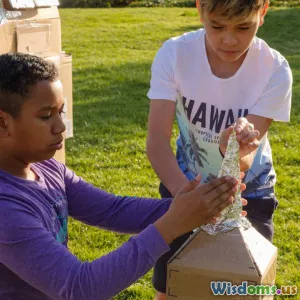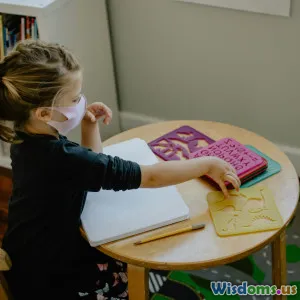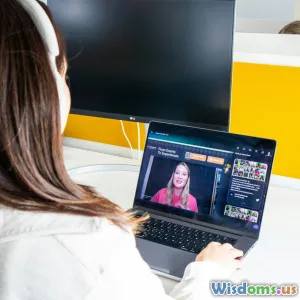
Fun Outdoor Science Experiments for Kids
8 min read Engage kids with fun outdoor science experiments that blend creativity and education seamlessly. (0 Reviews)
Fun Outdoor Science Experiments for Kids
Engaging children in science doesn't have to be confined to the classroom or joggers on lessons. Taking experiments outdoors can spark curiosity and encourage a hands-on learning experience that resonates long after the fun is over. In this article, we present a variety of DIY science experiments that are not only fascinating but can also be conducted using easily available materials.
1. DIY Volcano Eruption
Supplies Needed:
- Baking soda (1 cup)
- Vinegar (1 cup)
- Liquid dish soap (optional)
- Food coloring (optional)
- Plastic bottle or a container
- Tray or a large plate to catch the overflow
Instructions:
- Place the plastic bottle in the center of the tray.
- Add baking soda into the bottle.
- Mix a small amount of dish soap and food coloring in a cup and add it to the bottle for a colorful eruption.
- Finally, pour in the vinegar and step back to watch the exciting eruption unfold!
Explanation:
This experiment illustrates an acid-base reaction where vinegar (acetic acid) and baking soda (sodium bicarbonate) react to create carbon dioxide gas, leading to a bubbly eruption. The soap captures the gas in bubbles, creating the frothy mountain effect! Children will be thrilled to witness the unexpected results of their mixture.
2. Nature Scavenger Hunt: Scientific Observation
Supplies Needed:
- Scavenger hunt checklist (items to find based on the environment, e.g., leaves, insects, rocks)
- Magnifying glasses
- Notebooks and pencils for observations
Instructions:
- Prepare a checklist of natural items common to your outdoor location.
- Provide each child with a magnifying glass, notebook, and pencil.
- Set out to find and document each item on the list, making notes about colors, shapes, or characteristics.
Explanation:
This hands-on activity allows children to engage in scientific inquiry, using observation skills that are critical in fields like biology and ecology. They can learn about living organisms and their environments, further trusting their critical thinking and investigative skills. For added fun, incentivize discoveries with treasures or discovery badges for completing the scavenger hunt.
3. Solar Oven S'mores
Supplies Needed:
- Cardboard pizza box
- Aluminum foil
- Clear plastic wrap
- Black construction paper
- Marshmallows, chocolate, and graham crackers for the s'mores
Instructions:
- Cut a flap in the top of the pizza box, leaving one side attached (creating a reflector). Line the inside of this flap with aluminum foil.
- Place the black construction paper at the bottom of the box, where you will lay the s'mores.
- Cover the opening of the pizza box with clear plastic wrap to create a greenhouse effect.
- Position the solar oven in direct sunlight and wait for about 30 to 60 minutes, checking periodically.
Explanation:
This experiment demonstrates how solar energy can be harnessed for cooking. By trapping heat in the box (greenhouse effect), you can even make tasty treats! This experiment is a fun way to explain renewable energy and introduces basic thermodynamic principles.
4. DIY Water Filtration System
Supplies Needed:
- 2-liter plastic bottle (cut in half)
- Gravel
- Sand
- Activated charcoal
- Coffee filter or cheesecloth
- Contaminated water samples (or slightly dirty water)
Instructions:
- In the upper part of the bottle, layer sand, then charcoal, followed by gravel to create a filtration system.
- Place a coffee filter over the mouth of the bottom half of the bottle (the receiving end).
- Pour the contaminated water through the filtration system and observe how the water gets cleaner as it passes through mixed materials.
Explanation:
Children learn about how filtration works and the importance of clean drinking water. This experiment also ties into environmental issues and discussions around water pollution, making them aware of this global crisis and the necessity for innovative solutions.
5. DIY Weather Station
Supplies Needed:
- Measuring cup (for measuring rainfall)
- Plastic bottle (for an anemometer)
- Paper and straws (for wind direction)
- Thermometer (or digital platform for temperature)
Instructions:
- Create a rain gauge using the measuring cup by placing it in an open area to collect rain.
- Use the plastic bottle to construct a small anemometer to measure wind speed with straws.
- Record local weather data each day, creating patterns over time.
- Plot graph points to visualize temperature fluctuations using a thermometer.
Explanation:
This project teaches kids the basics of meteorology and fosters observational and scientific analysis skills. As they track weather patterns and discuss climate changes, children grow aware of their surroundings and how to monitor natural phenomena.
Conclusion
Engaging kids in these outdoor science experiments teaches more than just scientific principles—it encourages critical thinking, observation, and the ability to question the world around them. Leveraging environmental settings not only enhances their learning experience but nurtures a sense of discovery and curiosity. Each activity sparks discussions about important scientific concepts, from chemistry reactions to ecological considerations. So gather your materials, cultivate excitement for science, and head outdoors for a fun-filled day of experimentation!
Ultimately, such activities will foster a lifelong interest in science and develop inquisitive minds ready to tackle the challenges of tomorrow. Whether through the magical eruption of a DIY volcano or tracking the weather, every child's experience has the potential to be as memorable as it is educational. Pick an experiment, have fun, and let your outdoor adventure begin!
Rate the Post
User Reviews
Popular Posts





















